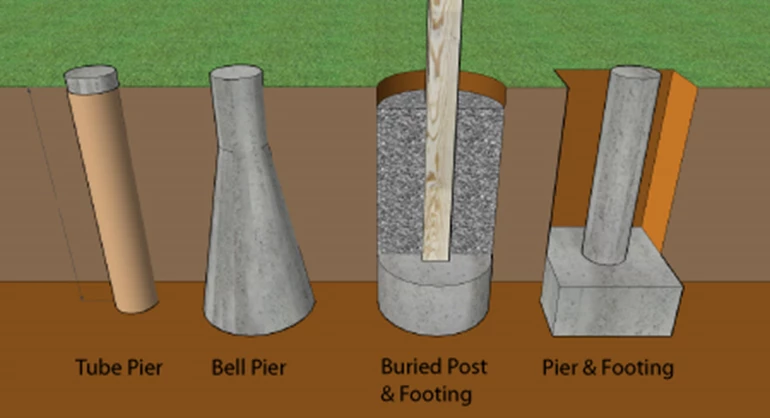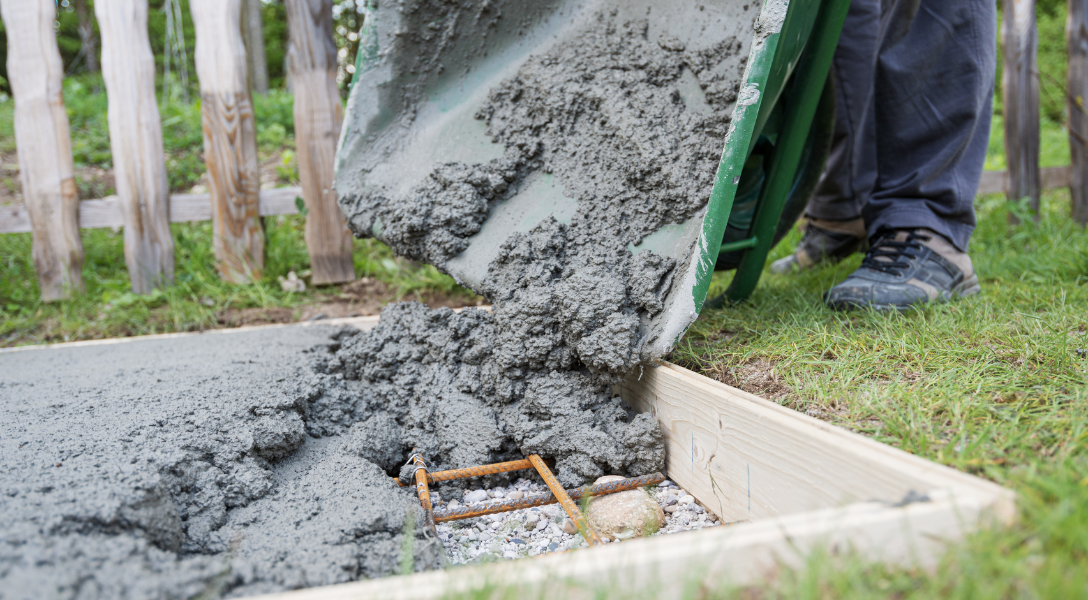Picking the Right Deck Footings for Stability and Longevity
When it concerns developing a deck, among the most vital choices you will certainly make is picking the best grounds for security and longevity. The durability and safety of your deck depend greatly on the sort of grounds you select, as they supply the vital assistance and stability to endure the test of time. With a myriad of choices available, it can be frustrating to identify which footings are best fit for your details demands. In this discussion, we will certainly explore the various sorts of deck footings, think about the vital elements to consider when deciding, and dive into the pros and cons of various choices. By the end, you will have a clearer understanding of the options handy and be much better geared up to make an informed decision for your deck project.
Sorts Of Deck Footings
There are a number of sorts of deck grounds that can be utilized, each offering distinct advantages and factors to consider. One usual kind of ground is the concrete pier ground. These grounds are composed of a cylindrical opening loaded with concrete, which supplies a strong foundation for the deck blog posts. Concrete pier grounds are fairly simple to set up and supply outstanding security, making them a prominent option for numerous deck jobs.
These footings are installed by screwing them into the ground, which creates a secure foundation for the deck. They also permit for very easy change and progressing of the deck if needed.
Alternatively, some builders select precast concrete footings. These grounds are made from resilient concrete and be available in various forms and dimensions to fit various deck layouts. Precast concrete footings are hassle-free to install and provide a steady base for the deck structure.
Finally, another option is the post-in-anchor footing system. This sort of footing includes driving a steel support right into the ground and attaching it to the deck article. It offers flexibility in regards to placing the deck articles and is ideal for decks with lightweight structures.
When selecting the appropriate sort of deck footing, it is vital to consider aspects such as dirt conditions, deck lots, and neighborhood building regulations (Deck Footings). Consulting with an expert specialist or architectural engineer can aid guarantee the suitable ground is chosen for a stable and secure deck
Variables to Consider When Picking Grounds
When picking the ideal grounds for a deck, it is vital to carefully think about different variables such as soil problems, deck load, and adherence to neighborhood building ordinance. These factors play a significant role in guaranteeing the security and toughness of the deck framework.
The kind of dirt on which the deck will be constructed determines the kind of grounds needed. On the other hand, decks constructed on clay or expansive dirts might need footings that can suit the soil's propensity to increase and agreement.
Another essential variable is the deck tons. The weight of the deck, including the materials made use of and any prospective live lots such as furniture or celebrations, should be considered when selecting footings. The footings must be developed to birth the weight of the deck and distribute it evenly to stop any kind of architectural problems or failings.
Finally, adherence to neighborhood structure codes is vital. Building ordinance differ from region to region, and it is necessary to follow the details demands established by the regional authorities. Deck Footings. These codes make sure that the deck is built securely and meets the essential requirements for structural stability and load-bearing capability
Concrete Grounds: Advantages And Disadvantages

Concrete grounds use numerous benefits and disadvantages when used as the structure for a deck. On the silver lining, concrete grounds offer exceptional security and durability. Concrete is a strong and stiff product that can sustain hefty lots and withstand different weather condition problems. It likewise has a lengthy lifespan, making it a reputable selection for lasting use.
An additional advantage of concrete footings is their convenience. They can be put right into various forms and sizes to fit numerous deck styles and arrangements. Concrete grounds can be customized to fit the specific needs and requirements of the deck framework.
Nonetheless, there are additionally some disadvantages to utilizing concrete footings. look what i found This can enhance the general price of the deck task and might require professional support.

Helical Piers Vs. Sonotubes: Which Is Much better?
In taking into consideration the structure choices for a deck, the contrast between helical piers and sonotubes is crucial in establishing the remarkable option. Helical piers, also known as screw stacks, are steel shafts with helical plates connected to them. They are twisted right into the ground utilizing hydraulic equipment, giving a sturdy and secure foundation for the deck. On the other hand, sonotubes are round forms constructed from cardboard or fiber material that are filled up with concrete. They are placed in an opening dug into the ground and give support for the deck.
When it involves security and sturdiness, helical piers have the upper hand. The helical plates on the piers develop a solid hold with the dirt, avoiding any kind of motion or look at this site changing of the deck. This is particularly helpful in locations with unstable or changing soil conditions. Sonotubes, on the various other hand, rely only on the concrete loading for stability, which may not provide the exact same degree of strength and resistance.
In terms of installation, helical piers are reasonably easier and faster to install compared to sonotubes. The hydraulic equipment used to twist the piers right into the ground makes certain a reliable and fast procedure. Sonotubes, on the various other hand, call for digging holes and pouring concrete, which can be lengthy and labor-intensive.
Furthermore, helical piers are an even more flexible choice. If required, they can be utilized in numerous dirt conditions and can be adjusted or enhanced. Sonotubes, on the other hand, might require extra support, such as rebar, in particular dirt conditions or areas with high load needs.
Selecting the Right Footings for Your Deck's Measurements
For optimal architectural stability, it is vital to carefully choose the appropriate grounds that straighten with the dimensions of your deck. The measurements of your deck, including its size, size, and elevation, play a significant function in establishing the kind and dimension of grounds called for.
When picking footings for your deck, it is very important to consider the load-bearing ability of the soil. The weight of the deck, incorporated with the weight of any kind of furnishings or individuals on it, applies a substantial pressure on the footings (Deck Footings). It is critical to select footings that can adequately support this weight without moving or sinking over time.
The dimension and form of the grounds ought this content to additionally be considered. Bigger decks with greater measurements need bigger grounds to provide sufficient stability and assistance. The form of the footings, whether they are round or square, relies on the design and layout of the deck. Furthermore, the deepness at which the grounds are set up need to be determined based on the frost line in your area to prevent any heaving or shifting because of freezing temperature levels.
Conclusion
Finally, choosing the ideal deck grounds is important for making certain security and sturdiness. Aspects such as the kind of grounds, the deck's measurements, and the benefits and drawbacks of various choices need to be taken into consideration. Concrete footings offer strength and long life, yet may be much more pricey and time-consuming to install. Helical piers and sonotubes have their own benefits and drawbacks. Eventually, choosing the suitable grounds for your deck's particular requirements is essential for a durable and effective framework.
These grounds are composed of a cylindrical hole filled with concrete, which supplies a solid foundation for the deck blog posts. Concrete pier grounds are reasonably very easy to set up and offer outstanding security, making them a preferred choice for many deck tasks.
Precast concrete footings are hassle-free to mount and give a steady base for the deck framework.
It supplies versatility in terms of positioning the deck messages and is suitable for decks with light-weight frameworks.
Concrete grounds provide numerous benefits and negative aspects when made use of as the structure for a deck.